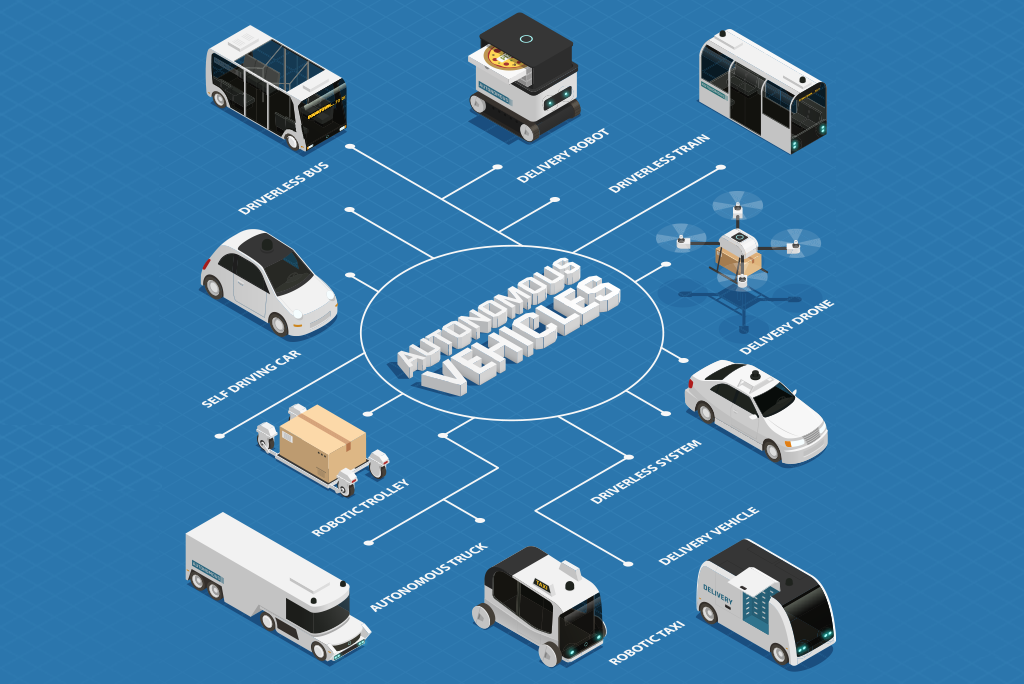
People are investing billions of dollars in autonomous vehicle (AV) technology. The industry is displaying spectacular advancements to show for it. However, we are still nowhere near achieving the widespread deployment of fully autonomous vehicles.
AVs Today
At this time, no companies offer a Level 5, fully autonomous vehicle that can operate in all circumstances with no human intervention.
The majority of AV leaders have achieved Level 4 technology. This means that most driving capacities are automated, but an individual is still needed in rare instances. These vehicles, mainly campus shuttles or employee buses, operate solely on pre-destined routes under certain conditions (daytime, good weather).
Self-driving cars available for the public to buy for personal use are still at Level 3. A Level 3 vehicle has a computer that handles two or more synchronous driving capabilities, such as cruise control and lane-keeping. A Level 3 leader on the market is Cadillac’s Super Cruise system. Consumer Reports ranked it first in a 2018 comparison test between Cadillac’s Super Cruise, Nissan/Infiniti’s ProPilot Assist, Tesla’s Autopilot, and Volvo’s Pilot Assist systems.
An autonomous driving system is needed for a self-driving car to operate on the roads. The system is built by using a collection of software and sensors. These elements work together to create a living map of the world.
Most AV companies rely on the technological foundations of lidar, radar, cameras, and ultrasonic sensors. There is debate on whether lidar is necessary in cases where radar and cameras are already used. Many companies use lidar along with cameras and ultrasonic sensors to form multi-layered safety nets.
However, Tesla and Nissan are vocal opponents of lidar, opting to use cameras and ultrasonic sensors for the autonomous systems in its vehicles.
According to Nissan General Manager Tetsuya Iijima, “At the moment, lidar lacks the capabilities to exceed the capabilities of the latest technology in radar and camera.”
Machine learning and artificial intelligence (AI) enables companies to construct simulation environments. It includes maps of intersections, routes, and cities to quickly test rare scenarios and hardware tweaks on their cars.
Currently, a few startups are exploring Vehicle to Everything (V2X) communication. It enables traffic lights to talk to cars, which in turn talk to other cars, which in turn talk to weather services, and so on. These incredibly dynamic systems can prevent many accidents and traffic jams, going beyond vehicles communicating with one another.
However, VX2’s cost to enter is high because of the high cost associated with it for infrastructure projects, traffic lights, and new cars. These decreases the rate of adaptability, outside of those in special zones and innovative cities, until there is a price drop.
AVs Tomorrow
Restricted Level 4 and 5 automation in transportation, such as shuttle and delivery services, is more likely to be seen today than open Level 5 automation in every vehicle. Good news— it’s not a total loss. Even limited automation would relieve many monotonous and unpleasant driving scenarios.
The two biggest challenges facing the future of AVs are technology and profitable business models.
In terms of technology, it’s critical that AV technology truly works. Michelle Avary, head of autonomous mobility at the World Economic Forum, says, “Really making sure that the technology is working in the areas of perception, which is vision— being able to identify objects and then understand how to move around them. That has yet to be solved.”
Avary also believes that the ongoing strain in trading between the United States and China could prevent firms from sharing geography-specific data sets and from operating outside their own countries. It may “actually stymie the growth of the industry,” since collaboration and data sharing among companies building AV technology would be squashed.
According to Avary, the business model for self-driving vehicles is also quite an undertaking. “We see some big divergence between the whole idea of the business model of the robo-taxi versus what we see in areas like commercial trucking, mining, and construction, where the business model case might be more readily made,” says Avery.
Compared to the so-called robo-taxis focusing on transporting people, using autonomous vehicles to transport goods on highways is a more lucrative business model. In the face of an impending shortage of truck drivers, self-driving trucks could lower the cost of shipping goods. There are also lucrative opportunities for AV technologies to be utilized in mining and construction industries. For example, autonomous machines could dig trenches for laying oil pipelines.
Preparing for the Future
No matter the timetable, AV technologies are progressing and continue to promise improved driving safety. Be sure your organization is prepared with IEEE Guide to Autonomous Vehicle Technology. This seven-course program covers foundational and practical applications of autonomous, connected and intelligent vehicle technologies.
Click here today to learn more about accessing this program for your organization.
Resources
Choudhury, Saheli Roy. (1 Jul 2019). Self-driving cars face two important challenges, says World Economic Forum executive. CNBC.
Kaslikowski, Adam. (30 Jun 2019). Everything you need to know about autonomous vehicles. Digital Trends.
Edelstein, Stephen. (10 Oct 2018). Cadillac Super Cruise beats Tesla Autopilot in Consumer Reports testing. Digital Trends.


[…] car to the customer’s door, which would leave the driver free to prepare for the next delivery. Because fully driverless level five autonomous vehicles are not yet available, most deliveries made by an autonomous car would either require a driver inside the vehicle or for […]
[…] companies are working to skip level 3 autonomous driving and go straight toward level 4. As opposed to level 3 where it can be difficult to discern at what point is the human user should […]